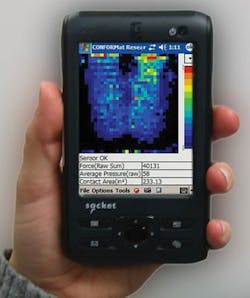Army eyes soldier surveillance sensor small enough to fit in a warfighter's cargo pocket
NATICK, Mass., 7 April 2013. U.S. Army researchers are reaching out to industry for ideas on how to build a mobile infantry sensor small enough to fit in a soldier's cargo pocket. The sensor would be for indoor and outdoor intelligence, surveillance, and reconnaissance (ISR) missions.
Officials of the Army Natick Soldier Research Development and Engineering Center (NSRDEC) in Natick, Mass., released a special notice last week (solicitation number W911QY13R0032) for the Research and Development for Cargo Pocket (CP) Intelligence, Surveillance, and Reconnaissance (ISR) System Enabling Technologies program.
Army researchers are interested in a pocket sensor measuring no larger than 7.5 by 7.5 by 1 inch -- or about 56 cubic inches -- that initially would be called the Cargo Pocket ISR system.
For this project, Army researchers are interested in two kinds of enabling technologies: advanced payloads that weigh about two grams and power consumption for a imaging sensor that can work at night and in low light; and guidance, navigation, and control technologies that will work indoors where GPS is unavailable.
Organizations interested in participating should send concept papers to NSRDEC in accordance with NSRDEC broad agency announcement W911QY-13-R-0032 online at http://www3.natick.army.mil/nsrdecbaa.html. Papers should identify necessary personnel, materials, and equipment, as well as approximate cost and schedule.
Also email papers to the Army's Michael Samuel at [email protected] no later than 26 April 2013. Researchers will review papers and invite promising ideas to expand on their concepts on about 6 May 2013.
For questions or concerns contact the Army's Michael Samuel by email at [email protected], or by phone at 508-233-4663.
More information is online at https://www.fbo.gov/notices/606049d4eb5d98e1f57c165b5337b0eb.

